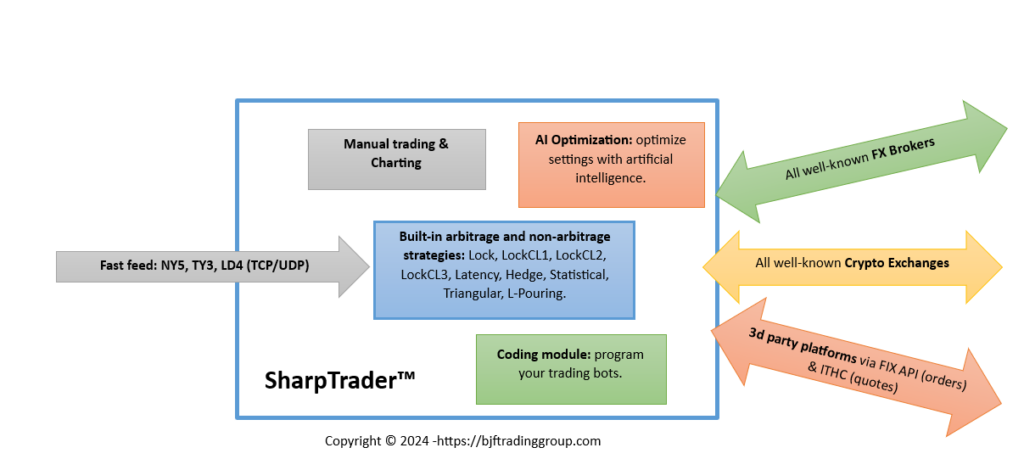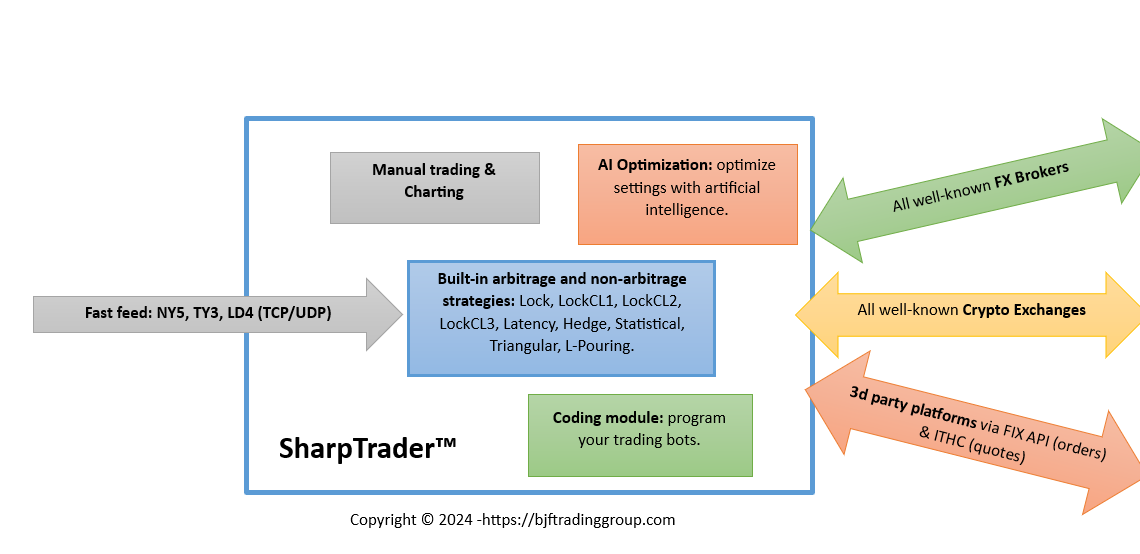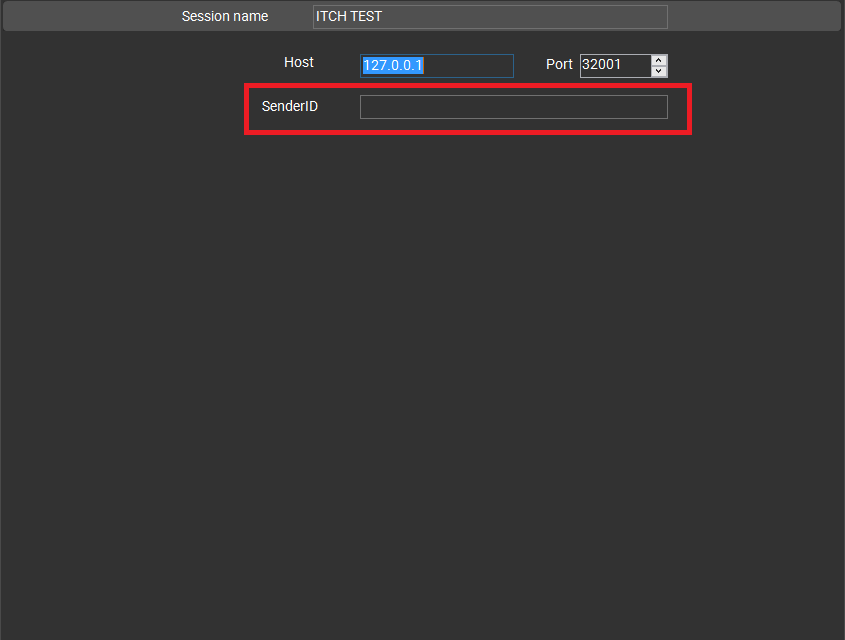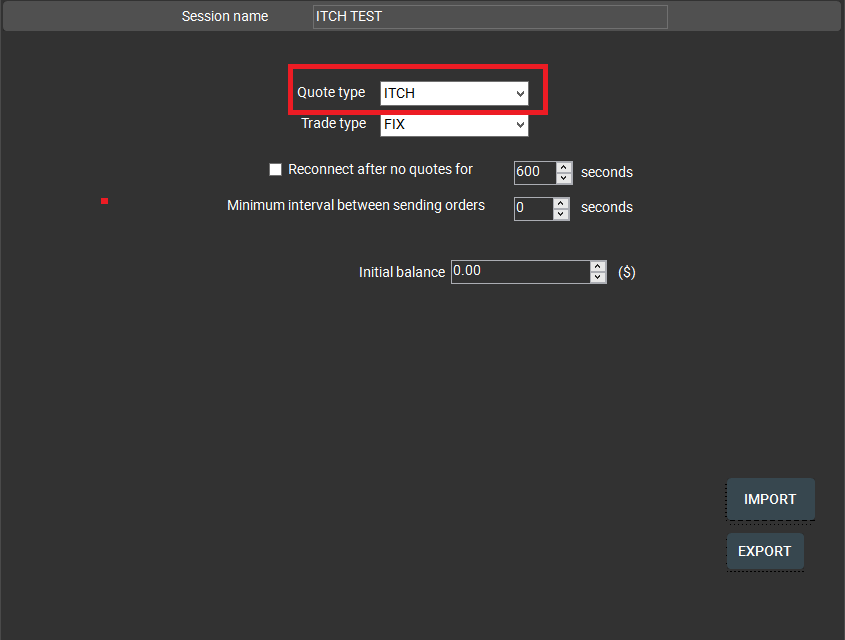Speed and Flexibility Face-Off: ITCH Protocol vs. FIX API in Financial Data Transmission 2024年01月31日 – Posted in: Arbitrage Software, cryptoarbitrage software, Forex trading
はじめに
Forex(外国為替)市場では、参加者間の効率的・安全・リアルタイムな電子通信を実現するために、さまざまなプロトコルが利用されています。これらのプロトコルは、取引の執行、市場データの送信、顧客とのやり取りの管理において極めて重要です。以下では、Forex取引で使用される主要なプロトコルについて詳しく解説します。
FIXプロトコル(Financial Information eXchange)
- 目的:FIXは、金融市場に関連する情報を国際的かつリアルタイムで交換するための、広く使用されている電子通信プロトコルで、主に取引執行に用いられます。
- 機能:取引注文、約定レポート、市場データ、その他の取引関連メッセージなどの金融情報を送信できます。
- 利点:FIXプロトコルは柔軟性、信頼性、普及率の高さで知られており、取引関連通信の業界標準となっています。
API(Application Programming Interfaces)
- 目的:APIは、トレーダーのアルゴリズム、取引プラットフォーム、またはサードパーティ製アプリケーションを、ブローカーの取引システムに直接接続します。
- 種類:Forex取引ではREST APIとWebSocket APIが一般的に使用されます。REST APIは取引執行、口座データや過去の市場データ取得に用いられ、WebSocket APIはリアルタイムの市場データ配信に使用されます。
- 利点:APIにより、カスタム取引、アルゴリズム取引、高頻度取引が可能となり、ブローカーの取引システムへ柔軟かつ直接的にアクセスできます。
ITCHプロトコル
- 目的:ITCHは主に市場データ配信に使用され、注文板の更新や取引情報などのリアルタイム市場情報を提供します。
- 機能:取引所やその他の市場から、トレーダーへ直接データフィードを提供します。
- 利点:ITCHは高速かつ効率的なデータ配信が可能であり、高頻度取引において特に有用です。
Forex(外国為替)市場プロトコル
- 目的:STPは、トレーダーのプラットフォームからブローカーの執行先まで、手動介入なしで取引を自動処理します。
- 機能:シームレスな注文執行を実現し、取引処理における遅延やエラーを削減します。
- 利点:STPは取引速度と効率を向上させ、変動の激しいForex市場において重要な役割を果たします。
SWIFT(Society for Worldwide Interbank Financial Telecommunication)
- 目的:SWIFTは取引プロトコルそのものではありませんが、国際送金および取引決済に使用されます。
- 機能:金融機関が安全で標準化された環境において金融取引情報を送受信するためのネットワークを提供します。
- 利点:SWIFTはForex取引における決済プロセスで不可欠であり、安全かつ信頼性の高い国際金融取引を保証します。
これらのプロトコルは、取引執行、データ送信、決済など、Forex取引エコシステム内でそれぞれ特定の役割を果たします。プロトコルの選択は、取引速度、柔軟性、取引形態(手動またはアルゴリズム取引)、市場データや執行先へのアクセスレベルなど、取引要件によって異なります。
FIXプロトコル ― 詳細解説
Financial Information eXchange(FIX)プロトコルは、証券取引および金融市場に関連する情報を国際的かつリアルタイムで交換するために広く使用されている電子通信プロトコルです。以下では、FIXプロトコルにおけるデータ伝送の流れを詳しく説明します。
接続の確立
FIXプロトコルを使用したデータ通信の最初のステップは、通常、クライアント(投資家やトレーダー)とサーバー(ブローカーや取引所)との間でネットワーク接続を確立することです。
クライアントはログオンメッセージを送信して接続を開始します。このメッセージには、FIXバージョン、送信者ID、宛先ID、セッション確立に必要なその他のパラメータが含まれます。
セッション管理
接続確立後、ハートビートメッセージの交換によりセッションが管理され、接続の維持と状態監視が行われます。
FIXプロトコルは信頼性が高く、順序付けられた安全なメッセージ交換を保証し、シーケンス番号管理により欠落を検出します。
メッセージ形式
FIXはタグ付きデータ要素で構成された標準化メッセージを使用します。メッセージはヘッダー、ボディ、チェックサムを含むトレーラーで構成されます。
メッセージタイプ
注文送信、変更、キャンセル、約定レポート、市場データ要求など、多様なメッセージタイプが定義されています。
データ送信と処理
メッセージはネットワークを通じて送信され、受信側のFIXエンジンによって解析・検証され、取引実行などの処理が行われます。
セッション終了
ログアウトメッセージの交換後、ネットワーク接続が終了します。
FIXプロトコルは現代の電子取引システムの基盤であり、安全性、信頼性、拡張性を兼ね備えています。
ITCHプロトコル ― 詳細解説
ITCHプロトコルは、市場データを高速かつ効率的に配信するために設計された直接データフィードプロトコルです。
接続の確立
ITCHは主に高速マルチキャストネットワークを通じて運用され、取引所から複数の受信者へ同時配信されます。
メッセージベース通信
注文の追加・削除・変更、取引情報など、市場イベントごとに独立したメッセージが送信されます。
データ形式
バイナリ形式を採用し、最小サイズ・最大速度を実現します。
リアルタイム配信
市場イベント発生と同時にデータが配信されます。
信頼性
シーケンス番号と再送信機構によりデータ欠損を防止します。
セッション終了
取引終了時にデータ配信が終了します。
ITCHプロトコル vs FIX API
ITCHは高速市場データ配信、FIXは取引管理と執行に特化しています。
SharpTraderにおけるITCH統合
SharpTraderはITCH統合により、超高速データ配信を実現します。
ITCH統合により、SharpTraderは高頻度取引およびアービトラージ戦略において、ミリ秒単位の優位性を提供します。

結論として、ITCH統合はSharpTraderをより高速・高効率・高信頼性のプラットフォームへと進化させます。
当社を取引パートナーとしてお選びいただきありがとうございます。
 English
English Deutsch
Deutsch العربية
العربية 한국어
한국어 Español
Español Português
Português Indonesia
Indonesia Tiếng Việt
Tiếng Việt 中文
中文





